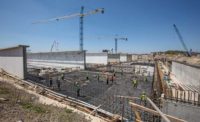Some communities already are taking proactive steps to address these deficiencies. On-the-ground levee assessments and immediate engagement with flood management authorities at every level of government will be crucial.
Two years is simply not long enough. A two-pronged approach is needed. First, city managers and citizens must engage with FEMA to convince the agency to put a formal extension process in place. Flood re-mapping timelines should be extended while levee improvements are under way to allow cities to focus on the solution, not the overly compressed process.
Second, residents in flood-prone states should contact their local members of Congress to support a bill that will suspend flood-insurance-rate map updates in areas where levees are being repaired. The newly established, bipartisan Congressional Levee Caucus has prioritized this issue, and a draft bill is currently under consideration.
Either FEMA or Congress should intercede. We need a new process to ensure homeowners do not face major insurance cost increases while providing smart fiscal spending solutions to make our levees strong.
Let’s prioritize threats and fund alternatives.
Due to the number of levee deficiencies identified across the nation, some regions have been applying political pressure to cut funding to slow or cripple the the Corps’ inspection process—this, too, is a dangerous path. We need to determine how vulnerable communities are to levee failures, and we need to better distinguish between theoretical deficiencies and imminent needs.
According to the American Society of Civil Engineers, $50 billion is needed during the next five years just to maintain and support already planned projects. The total price tag could escalate to several hundred billion dollars. We need a balanced, systematic approach that prioritizes risk and strikes a balance between flood control, protecting the environment and reviving our economy. This includes restoring floodplains and shoring up our levees with better safeguards and promising new technologies.
Check Funding Mechanisms
Additionally, we should re-examine our current flood-management funding mechanisms in order to find alternative models in which states, municipalities, private owners and investors play a greater role. This approach may include applying a portion of property tax revenues to a flood-management-system repair fund or developing local government incentives that encourage private investment through public-private partnerships.
Improving our nation’s flood-management infrastructure is time consuming and complex. It involves a range of policy, funding and engineering challenges.
Unity is vital.
In the end, the only way to advance flood-management policy is through coordinated effort among elected officials, all levels of flood-management and emergency agencies and the communities they protect.


Post a comment to this article
Report Abusive Comment